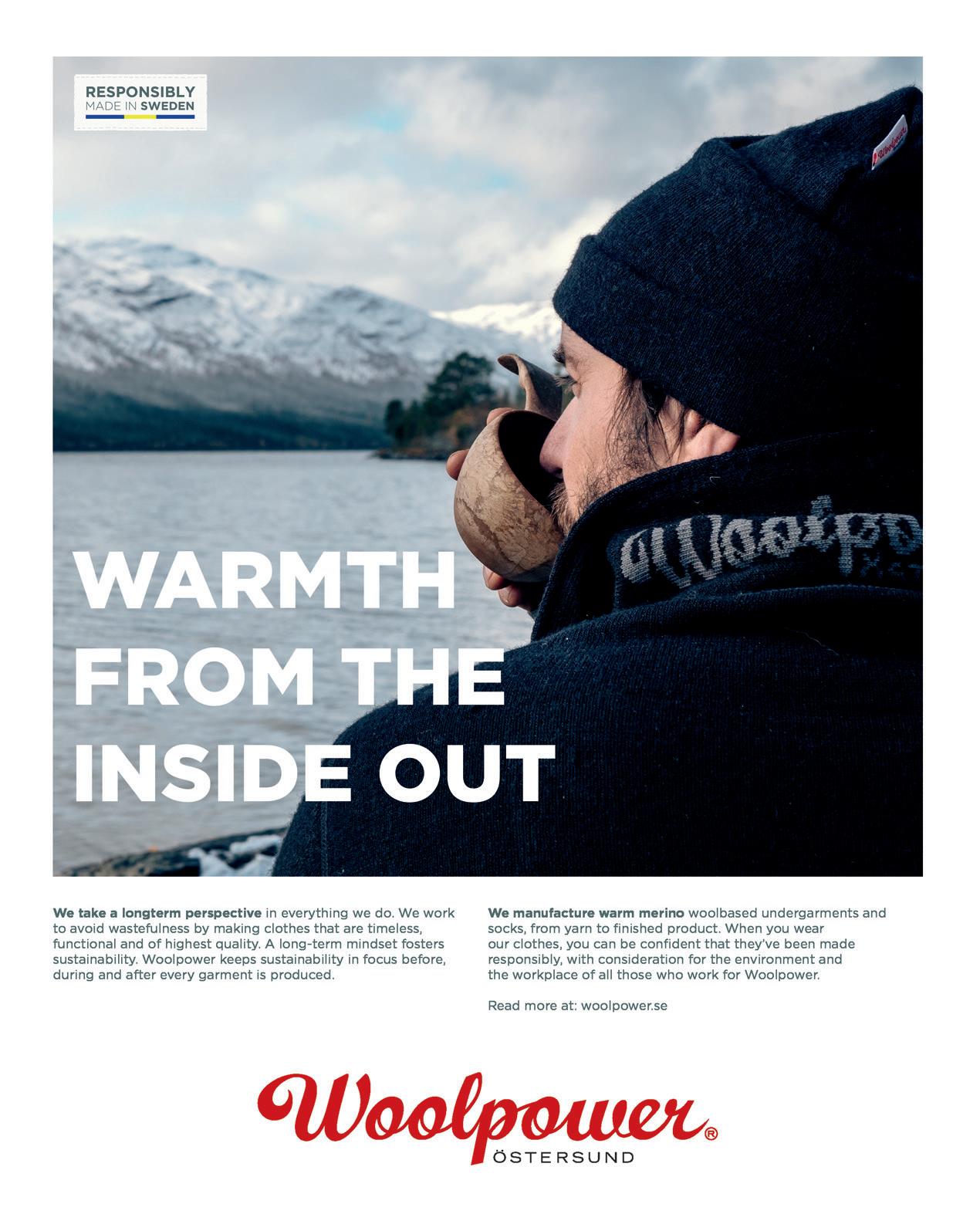
12 minute read
Creative Freedom in Iceland
A memoirist finds peace in the Westfjords of Iceland
As the southeast coast of Iceland came into view, I gasped in awe at the volcano shrouded in snow below. The mighty Öræfajökull rests on the edge of the Vatnajökull ‘Glacier of Lakes’, the largest ice cap in the island nation. I watched as turbulent Atlantic waves crashed on beaches of black sand, made of basalt rocks and lava, with nary a tree in sight.
Text and photos: Deidre Olsen
I grew up outside of Vancouver, a city nestled between the mountains and the ocean. I’ve always felt the most at home with and inspired by nature. Trapped inside my Berlin flat, lockdown had made the challenge of writing a trauma memoir insurmountable. I pressured myself to be productive but fell into a deep depression. I desperately needed something to look forward to, some kind of far-flung refuge to illuminate the path forward.
In December 2020, following a cursory Google search, I came across The Westfjords Residency. I was immediately drawn to the dramatic landscapes and remote location, alongside the focus on creative exploration and community connection. The residency being scheduled for February 2021, I quickly filled out the application and hit submit. The next month, I was thrilled to find out that I had been accepted. Sadly, due to complex travel restrictions and the unpredictability of the Covid-19 pandemic, the retreat was
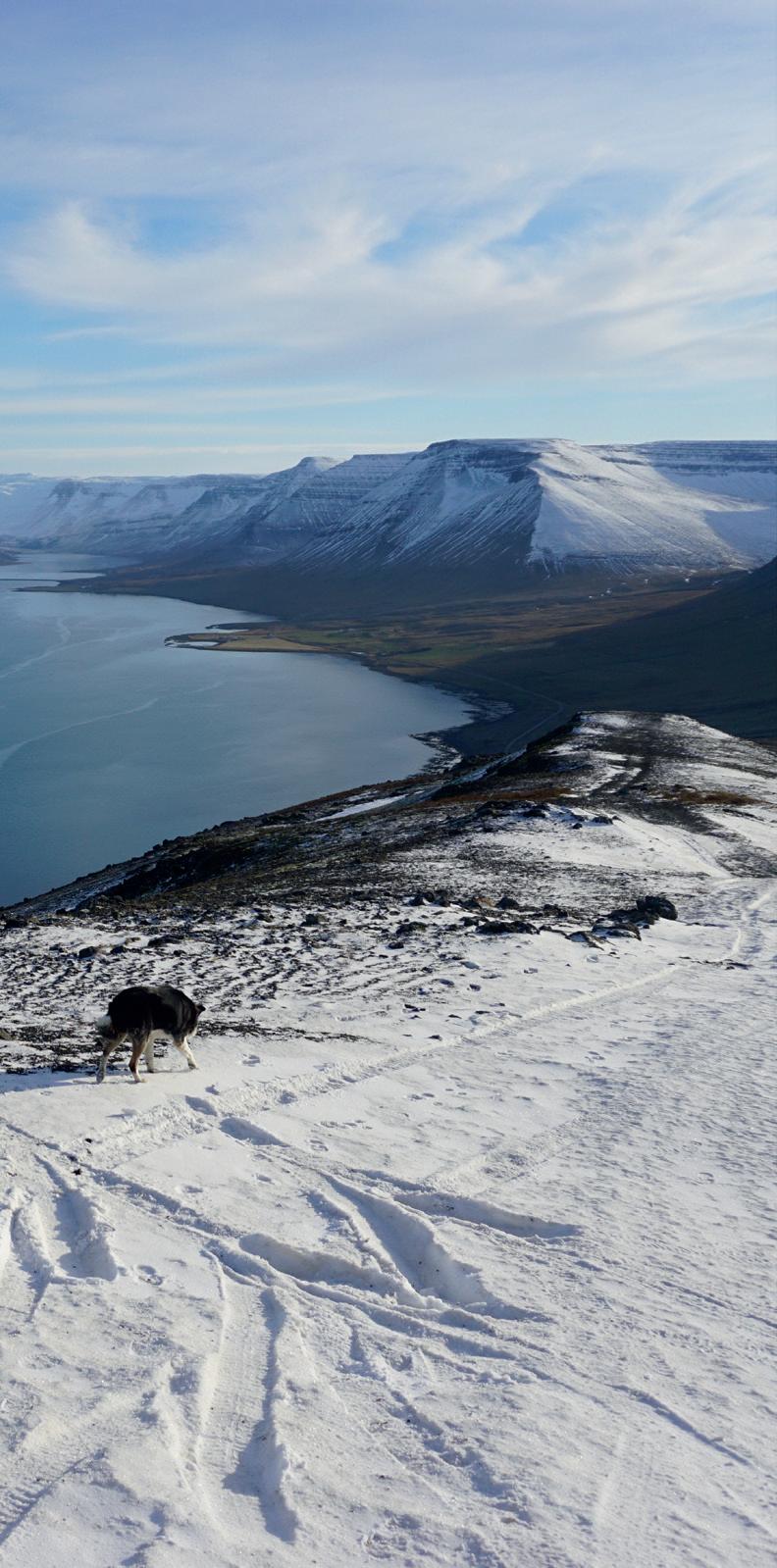
Deidre Olsen.
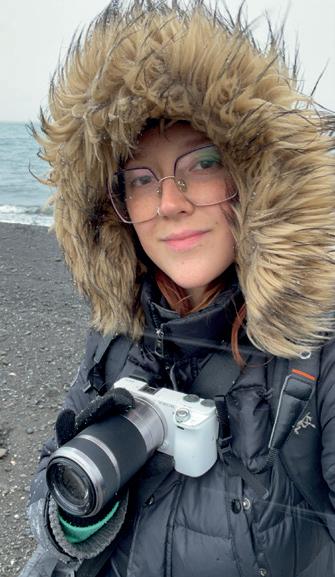
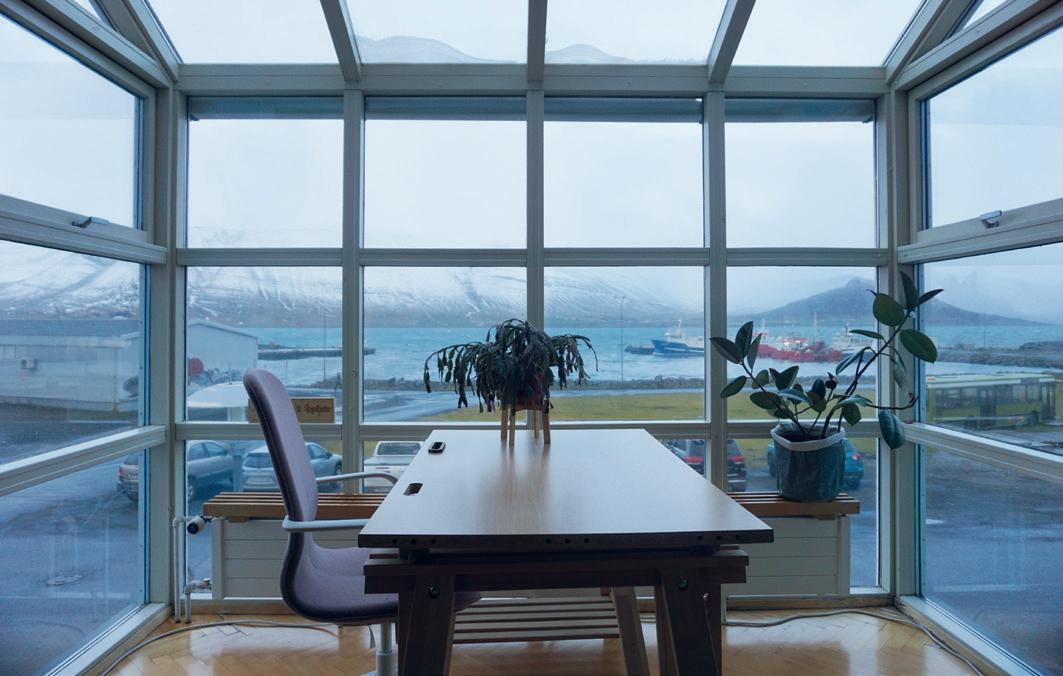
pushed back to October – but while initially disappointed, I was elated knowing that the residency would bookend a challenging year.
Beached whales, winding roads and Icelandic horses When the day finally came and I arrived at Keflavík Airport, I nearly levitated off the landed plane, my teeth clenched in an excited smile under my mask. I spent two days in Reykjavík with an old friend before meeting my group early on a Saturday morning at Hallgrímskirkja, a Lutheran church in the city centre. After our bags were packed into the back of a small bus, we hopped on board to begin our seven-hour journey. We took the north road to Þingeyri, passing through Ísafjörður to pick up groceries.
The drive was gobsmacking. We saw two beached whales, the skeletal remains of one and the partial flesh of another. We passed through tunnels, over mountain passes and down winding roads, peering off into the wild expanses of fjords, cliffs, waterfalls and beaches. While there were few animals to behold, longhaired brown and white Icelandic horses rested and grazed in open fields.
We arrived in Þingeyri in the late afternoon, unpacked our things and settled into our respective bedrooms. Þingeyri is one of the oldest settlements in the Westfjords and where the first trading post was established. With a population of 246, the village is situated on a strip of land on the coast of the Dýrafjörður. My window faced the ocean, a dock and the only open store in town – a gas station with limited hours. Later, the organisers gave us a tour of Þingeyri, including a coffee house, studio space and recreation centre. Before bed, we shared a hearty meal complete with soup, bread and a hummus dip.
The next morning, I rose late with the sun, showered and made myself a warm bowl of apple cinnamon oatmeal. I zipped up my insulated jacket, pulled on my blundstones foot by foot, and headed off to ‘Simbahöllin’. The four-storey olive-green Norwegian timber house is hard to miss. In 1915, Sigmundur ‘Simbi’ Jónsson imported the dwelling to the remote Icelandic village. The former grocery store earned the nickname of ‘Simbahöllin’, which means ‘Simbi’s Palace’. For more than four decades, Simbi and his wife Fríða sold everything from baked goods to Fisherman’s boots here. In 2006, a young Belgian-Danish couple came across the dilapidated house and decided to buy it and fix it up.
Sitting on the main road through Þingeyri, the coffee shop serves, during the summer months, as a space for locals and visitors to come together and enjoy a warm brew. During the residency, artists have the option to use Simbahöllin as a workspace. I cosied up on an olive-green sofa with a cup of coffee, opened up my laptop and stared at the blank page. After a frustrating hour of writing one sentence and deleting it, I decided to get some fresh air.
A panorama of splendour Snowflakes fell around me softly as I walked towards the ocean, a grey fog
curtaining fjords from my view. I stopped just before the gentle waves could swallow my feet and took a deep inhale and exhale. Suddenly, I was overcome with joy and burst into tears. I spun myself in a circle, a panorama of splendour before me in every direction. In this moment of solitude, overtaken by the healing power of nature, I felt both cleansed and in awe. I snapped some photos with my mirrorless Sony camera and skipped back to Simbahöllin.
Back at my computer, words flowed from my fingertips onto the screen. Within hours, I had written 1,500 words, more than the previous several months combined. In the days to come, I’d double my daily word count, making it to 15,000 words, or 20 per cent of my memoir. I pulled nightmares from my memories, transcripts and police records and turned them into beautiful, harrowing, immersive scenes, ones I previously never thought would see the light of day. Before, whenever I attempted to sculpt together a narrative, I was left inconsolable, retraumatised and unable to move forward. But here, in the remote Westfjords, I found peace. Late one evening, I saw a message in our WhatsApp group saying that the northern lights were visible. I immediately jumped out of bed, threw on my warm winter clothes and ran outside into the frigid cold. I jogged away from the village lights towards a darker spot by the water, where two other artists stood. The moon, full and silver, was reflected on the ocean. The shadowy silhouettes of fjords stood ominous in the distance. Stars twinkled in between blue-green ribbons dancing across the night sky. Breathless, I looked up at the aurora borealis for the first time.
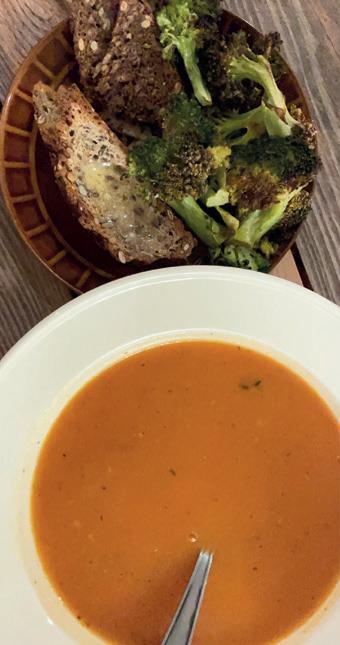
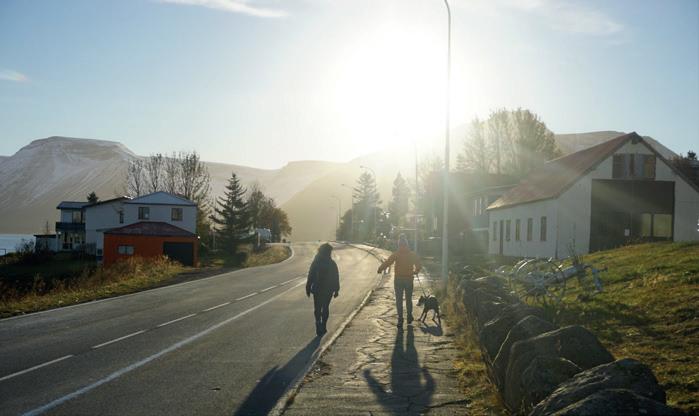
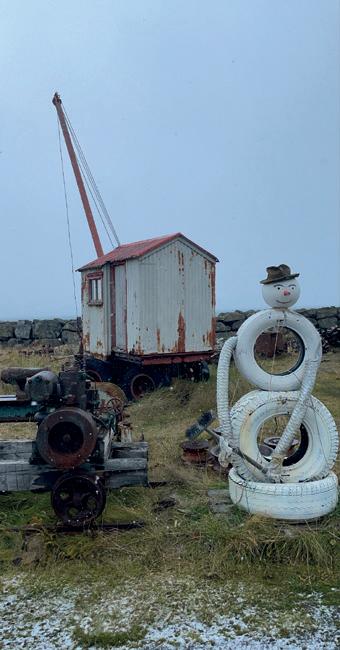
Deidre Olsen is an award-nominated writer living in Berlin.
Have writer’s block? Need inspiration? Visit www.westfjordsresidency.com for more information.
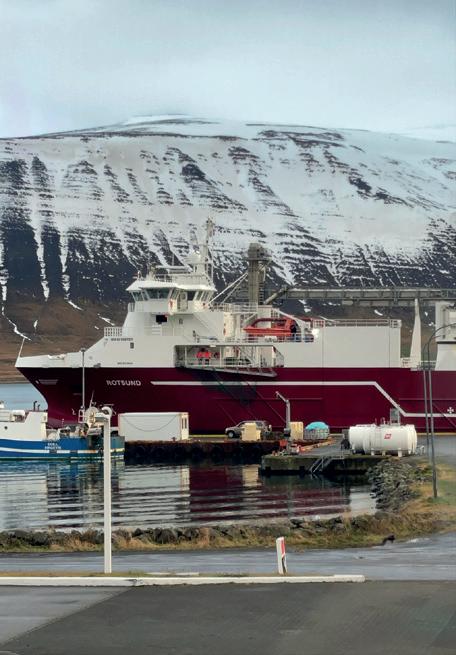
Scandinavian music
Four of the Nordic nations have put forth some of their brightest music talents to export some blockbuster pop around the rest of the world this month.
In Denmark, MØ has just released her latest album, Motordrome, and from it, a brand-new single and video, New Moon. The song is one of MØ’s more mainstream moments, the kind of which she likes to dip into now and again, knowing full well that she can leave us all in awe at it. New Moon is seemingly on a mission to soundtrack the next couple of months, even activating the trick of some heavy post-chorus repetition to hook us in and keep us there.
Swedish pop superstar Tove Lo is back with her first release in quite a while. HBO’s TV series Euphoria has deemed a new track of hers as being an essential part of its soundtrack, released at the end of Feburary. In the song How Long, we get to hear Tove dabbling in what is many people’s favourite direction of hers – that dark electronica side she does so well. It also features one of her punchier choruses.
Icelandic pop powerhouse BRÍET is back too with her first new release since 2020 – something of a comeback single, Cold Feet. It’s a sonically sparse heart-breaker of a ballad on which she bares her soul, with little to hide behind. The atmospheric number takes over a minute and a half to ‘get going’ in the production stakes, which makes for a captivating kind of listen. The experience of hearing the song is enhanced beautifully by the accompanying music video, showcasing a severe yet serene Icelandic landscape.
Finally, Norway’s very own Sigrid has paired up with British artist Griff for a collaboration, Head On Fire. It’s premium pop, this.
By Karl Batterbee
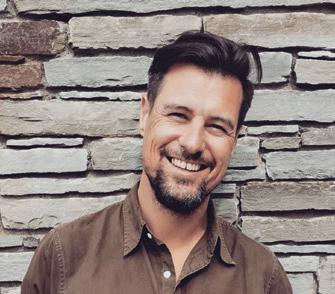
Listening to it, one can tell that as it was being composed, it was decided pretty early on in the process to pull out all the stops and make it hit as hard as possible. It sounds tailor-made for radio: be it in the UK, Norway or beyond.
Web: www.scandipop.co.uk
Existentialist, survivalist panic
I used to start the day by reading some of the news headlines on my phone. As an adult, it’s what you do, right?
And then I stopped, because it always made me into the cliché of the century. I would storm out into the kitchen and shout at my husband: ‘We need to get out. Now is the time. Buy a farm, learn to grow stuff, get some cows and sheep!’ Husband would pause and calmly say: ‘But you are allergic. And I like it here.’ Me, frustrated: ‘Never mind that! Viruses, empty shelves in the supermarket, violence, greed!’ And then to finish on a high: ‘Is that what you want for our children?’ Husband would shrug, wise to my panicky manipulative skills by now. to pick up the kids? Do we have enough petrol to get away? Where would we go?
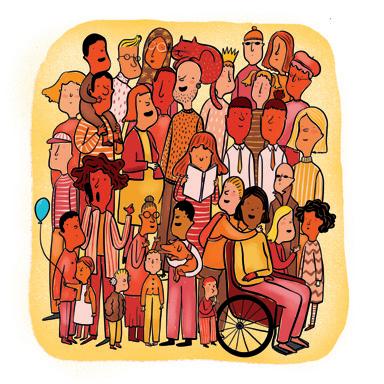
Then I’d rush the kids to school, jackets open, hats stuffed in pockets, bags hanging on elbows, my heart beating fast. Is today the day society collapses? Will I have time
And then I’d run into my neighbours, who’d smile at me and ask how things are and we’d have a quick chat before continuing up to school. There, I’d meet other parents who’d wave at me and make jokes about the state of the world and I’d realise that if I moved to the countryside to be allergic, I would also be much more isolated.
If you are a survivalist, you must really love life as you would be the only one left eating mushrooms in your tiny self-built hut when the rest of society has fallen. I don’t think I love life that much. But I do love people. Yes, that is what I want for my children – people.
By Gabi Froden
Gabi Froden is a Swedish illustrator and writer, living in Glasgow with her husband and two children. Her children’s and YA books are published in Sweden by Bonnier Carlsen and Natur&Kultur. www.gabifroden.com
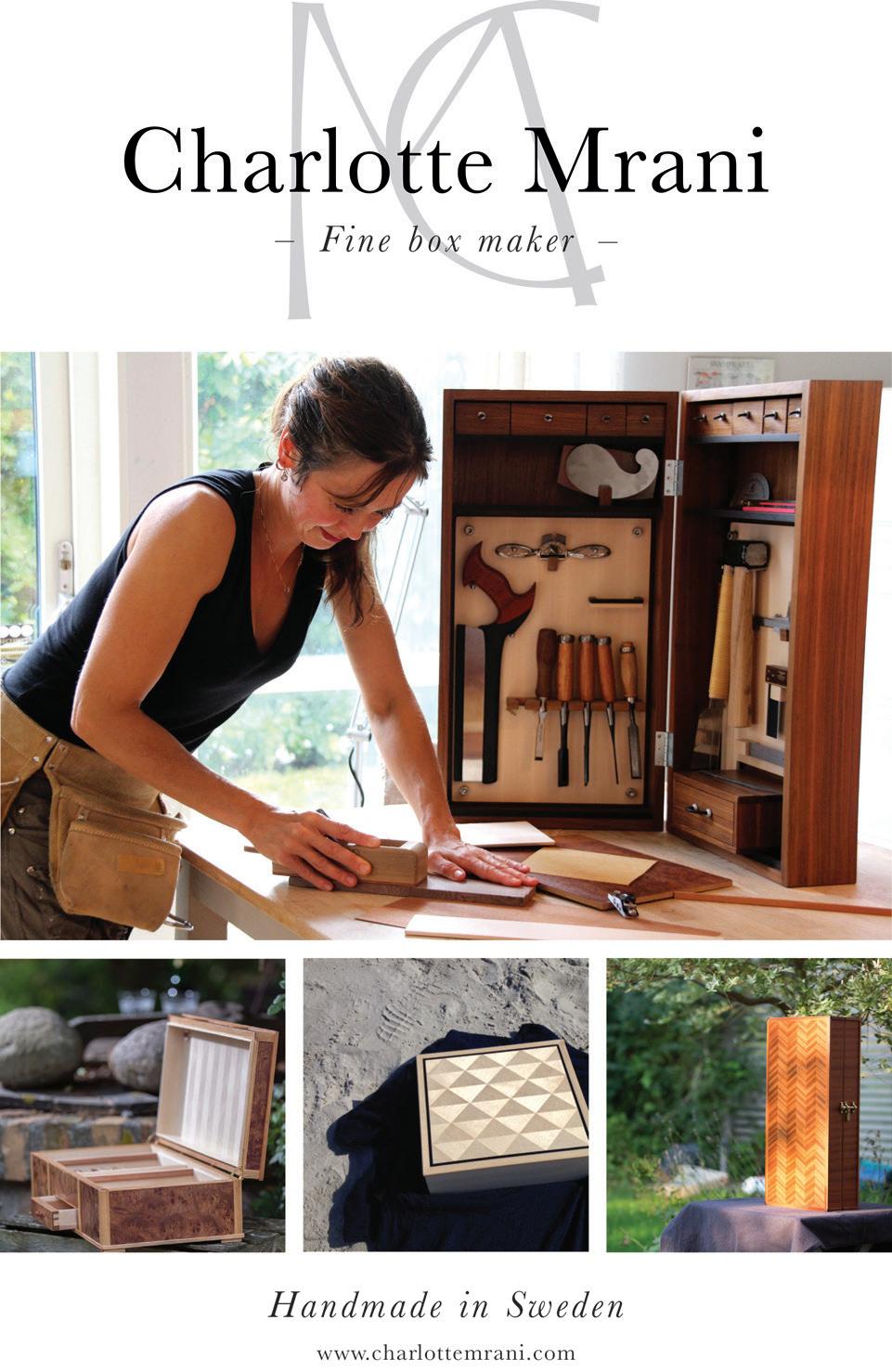
Scandinavian
Culture Calendar By Hanna Heiskanen
– Where to go, what to see? It’s all happening here!
Billy Budd (from 28 January) Billy Budd, the British composer Benjamin Britten’s 1951 opera, is now tackled for the first time by the Finnish National Opera in a production directed by the Belfast-born Annilese Miskimmon. This dramatic version is set on a submarine during the Vichy regime in 1940s France and stars Ville Rusanen in the title role. Helsinginkatu 58, Helsinki, Finland oopperabaletti.fi/en
Red Pearl Clown Festival (16-19 February) The Red Pearl Clown Festival was first organised in 2012 and celebrates the contribution and talent of female clowns in a traditionally male profession. Past festivals have featured an interactive performance in the spirit of film noir, Canada’s most famous clown sisters, and a surgery by clown doctors. Tallberginkatu 1, Helsinki www.hurjaruuth.fi/en/punainen-helmi Die Walküre (24 and 26 February) The Wagnerian epic Die Walküre will receive its Icelandic premiere this February at the Harpa Hall. The production will be directed by Julia Burbach and co-directed by the BAFTA award-winning Tal Rosner, who has also been in charge of the video production. The famous Wagnerian soprano Iréne Theorin reprises her role as Brünnhilde, and Icelandic baritone Ólafur Kjartan Sigurðarson makes his debut as Wotan. Austurbakka 2, Reykjavik opera.is/en
HUMAN International Documentary Film Festival (28 February to 6 March) HUMAN International Documentary Film Festival is Oslo’s largest film festival and has a strong focus on human rights and other societal issues. The festival hosts a competition series which, in 2022, includes a documentary about running a TV channel in Putin’s Russia, another about actors fighting for democracy in
BillyBudd. Photo: Erik Berg
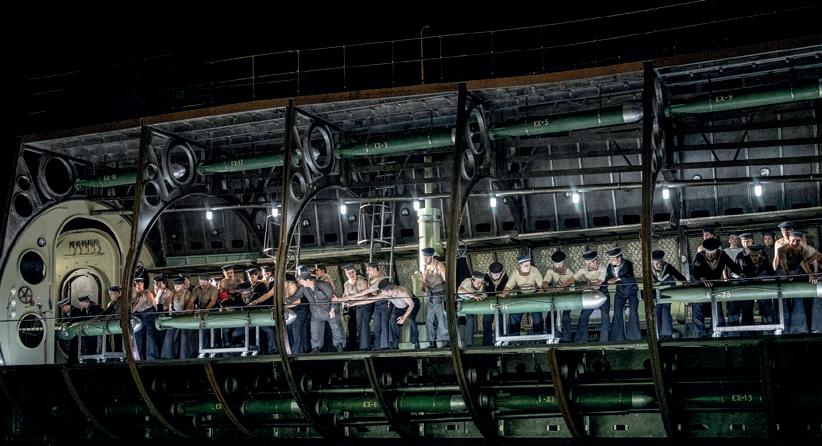
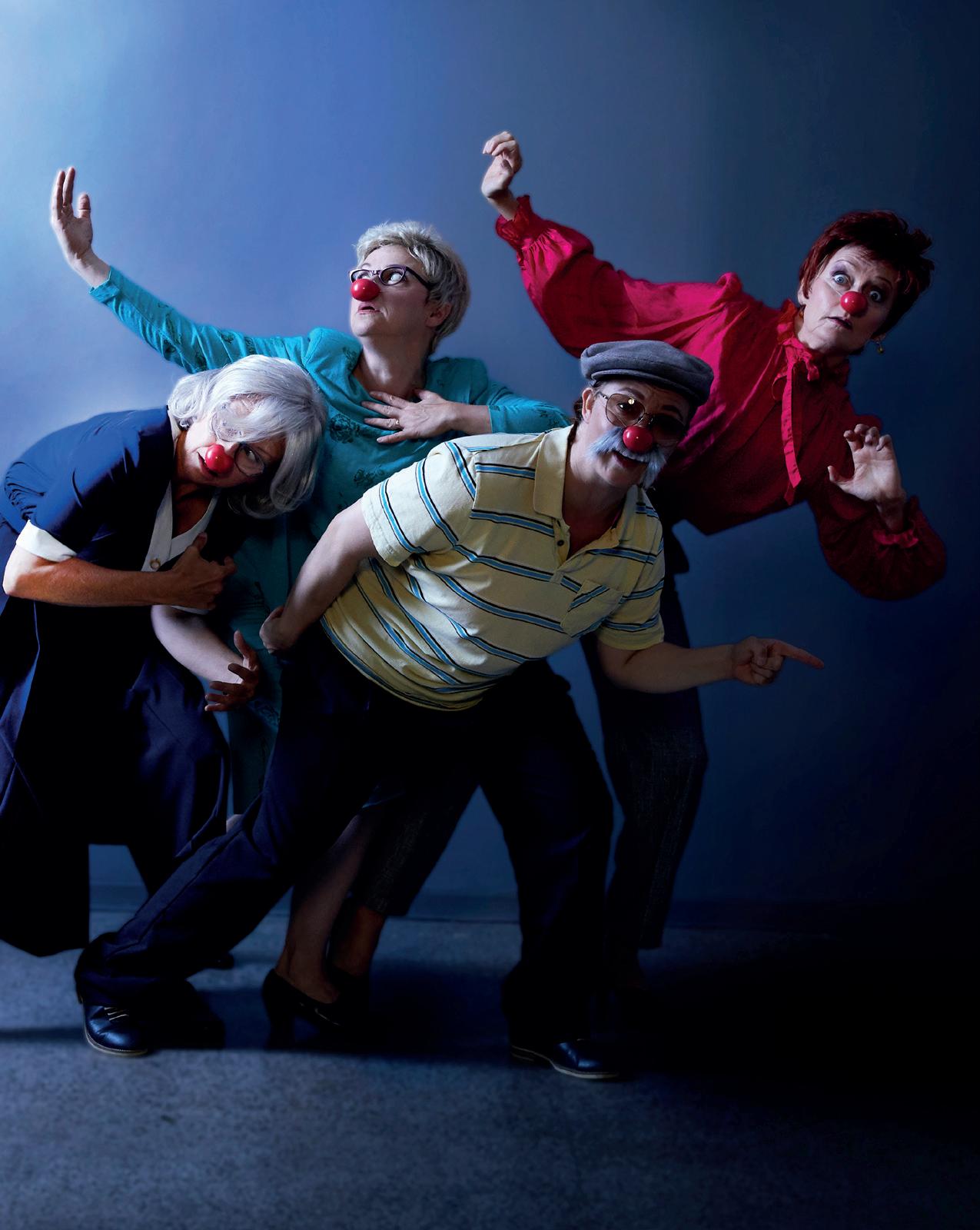
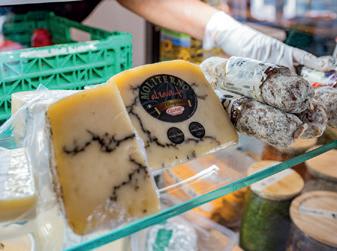
Munch painting. Photo: Dag Fosse, KODE.
Belarus, and a film on the masked democracy movement in Hong Kong. humanfilm.no/en
Culinary City Walk in Oslo (5 March) If you are new to Oslo, or you want to experience the city in a novel way, what could be better than eating your way through the city? The Culinary City Walk does precisely what it says on the tin and allows you to explore a variety of neighbourhoods, from multicultural Grønland to hipstery Grünerløkka, through food. The tour is led by authorised Oslo guides. by-k.no Wine tasting Gamla Stan (throughout February and March) ) If you are in the mood for a little cheese and wine in an atmospheric setting with a group of friends, join this tasting session in Stockholm’s old town. The two-hour session features eight wines accompanied by a variety of cheeses. Österlånggatan 28, Stockholm taysta.se
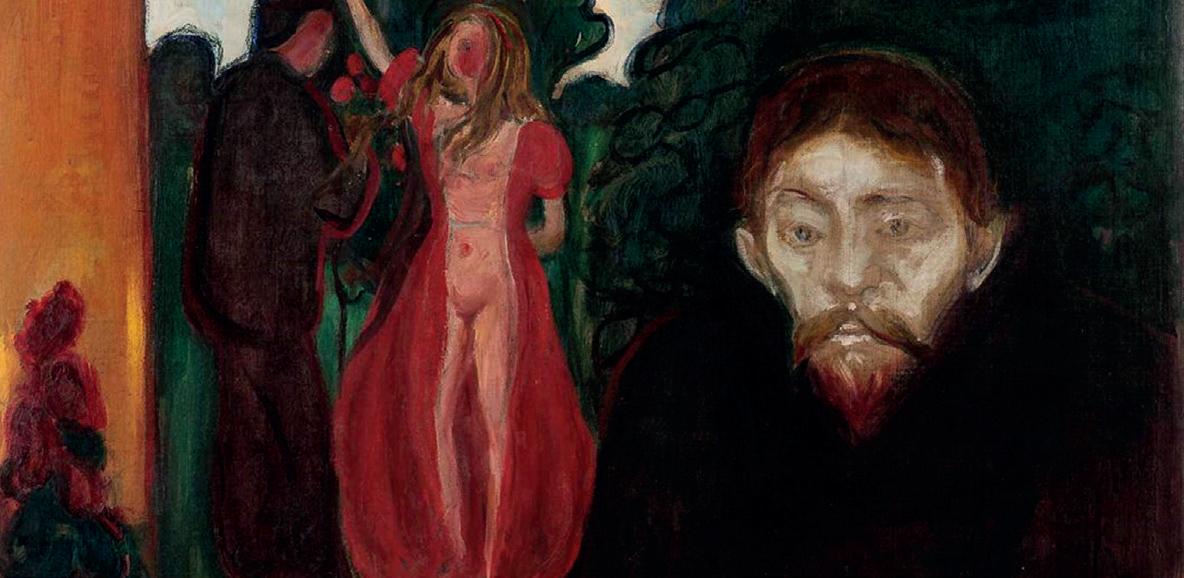
Wine tasting. Photo: Maja Andersson / Taysta
Munch and the Rasmus Meyer Collection (permanent exhibition) KODE 3, a part of a network of local art museums and composer homes in Bergen, Norway, hosts the world’s thirdlargest collection of works by Edvard Munch. 19th-century collector of the golden age of Norwegian art, Rasmus Meyer, is behind the core of the collection, which includes the works Jealousy, Melancholy, The Woman in Three Stages, and Evening on Karl Johan. Rasmus Meyers allé 7, Bergen kodebergen.no/en
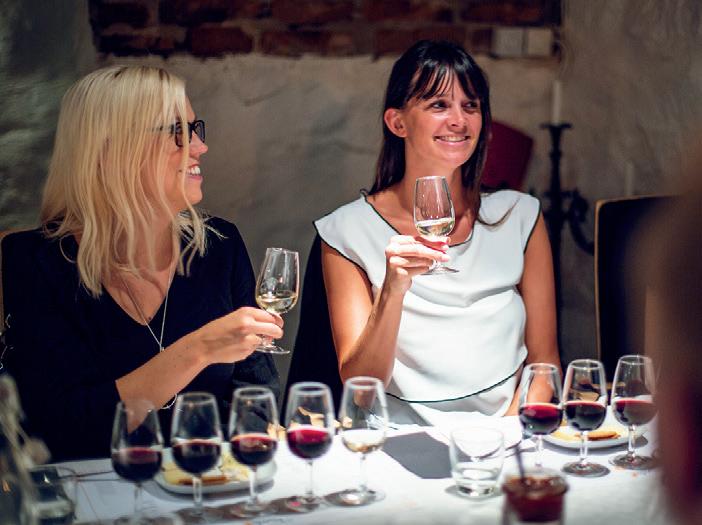
Culinary City Walk in Oslo. Photo: By K
